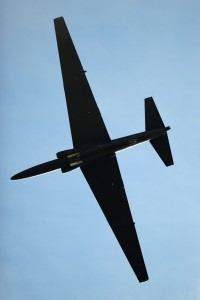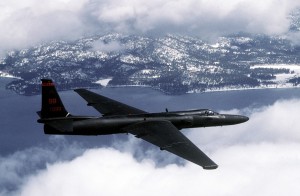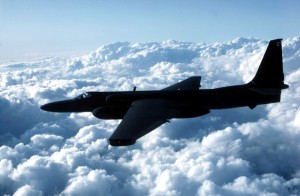Bloggers:
Marianne Bjordal Havnes, Post Doc
Andreas Møllerløkken, Researcher,
The Barophysiology group at the Department of circulation and medical imaging
Researchers are trying to find out why U-2 pilots operating in high altitude have central nervous system changes in a NATO-led project involving researchers from the Barophysiology group at NTNU, researchers from the U.S. Air Force in Texas and from the Institute of Aviation Medicine in Oslo.
You have probably been in a passenger jet, and as you get ready for take-off, you register the cabin attendants going through the safety instructions, mentioning something about loss of cabin pressure and oxygen masks, but you don’t worry about it. 15 minutes later the captain announces that the airplane has reached its cruising altitude of 38,000 feet. At this altitude the barometric pressure is only 1/5 of sea level pressure.
 Inside the aircraft the pressurisation system ensures that the cabin altitude according to international regulations will never exceed 8000 feet = ¾ of sea level pressure. So while you are travelling, you are actually performing a little mountain-excursion to the same altitude as Norway’s highest mountain, Galdhøpiggen.
Inside the aircraft the pressurisation system ensures that the cabin altitude according to international regulations will never exceed 8000 feet = ¾ of sea level pressure. So while you are travelling, you are actually performing a little mountain-excursion to the same altitude as Norway’s highest mountain, Galdhøpiggen.
Now imagine that you are flying twice as high as your airliner. At an altitude of 70,000+ feet the barometric pressure is 1/25th of an atmosphere. You can see the curvature of the earth and the blackness of space above. This is where the U-2 pilots are working. If you lose the cabin pressure in this environment, an oxygen mask will be of no help. You need to wear a space suit that will instantly inflate to a pressure of 0.3 bar (corresponding to 30,000 feet) and supply you with a breathing gas of 100% oxygen.
The U-2 planes have been operating since the 50s and are still in active duty. In fact, U-2 pilots have actually been flying more the last 10 years as other high-altitude reconnaissance airplanes have retired. This has resulted in an increased number of neurologic decompression sickness episodes.
A US Air Force research team has published findings of what are called white matter hyperintensities in the brain on magnetic resonance imaging (MRI) of U-2 pilots (McGuire et al., 2013) . Recently they have discovered similar findings in U.S. Air Force altitude chamber instructors (McGuire et al., 2014). This group works inside hypobaric chambers, training aircrew including U-2 pilots, in the effect of loss of cabin pressure and lack of oxygen. The altitude exposure in hypobaric chamber training is usually much shorter and less severe than in U-2 operations. None of the other U.S. Air Force control groups they have tested so far, including Air Force doctors, have had similar changes.
The U.S. Air Force research team visited the Institute for Aviation Medicine, Oslo, Norway, and wanted to meet Norwegian research groups that might contribute to understanding the pathophysiology behind the findings. Members of the NTNU Barophysiology group were invited based on their merits for a long time commitment to research on man in extreme environments.
Most of the work of the NTNU Barophysiology group has been related to the activity of diving and the adverse effects of working under water. Presently, the research is funded by the Norwegian Research Council through the Petromaks programme.

From left: Berit Holte Munkeby, MD, PhD, Norwegian Armed Forces, Dr Paul Sherman, USAF, Andreas Møllerløkken, PhD NTNU, Marianne Bjordal Havnes, PhD, NTNU, Dr Stephen McGuire USAF.
One of the technologies we are using in assessing possible stress after a dive is ultrasound detection of gas bubbles found in blood veins. These bubbles will form in nearly all diving activity, and it is recognised that the risk of decompression sickness increases with increasing amounts of bubbles.
Our way of observing vascular gas bubbles after diving has become a recognised method for evaluating procedures. It has also been shown both in animals and humans that the bubbles themselves influence the endothelium lining all blood vessels. When going to high altitudes, the pressure changes are opposite of diving. But there are many similarities as well, and the formation of bubbles is thought to be involved in the formation of the white matter hyperintensities.
After the meeting in Oslo, the researchers from NTNU did some preliminary investigations, and were invited to Lackland Air Force Base in Texas where the main investigation is taking place. The results from the tests at NTNU have already been presented at a NATO high altitude exposure meeting this summer in Paris, and has gained a lot of attention within NATO. Together with the Institute of Aviation Medicine in Oslo, the researchers from the Department of circulation and medical imaging are eager to continue the investigations.




